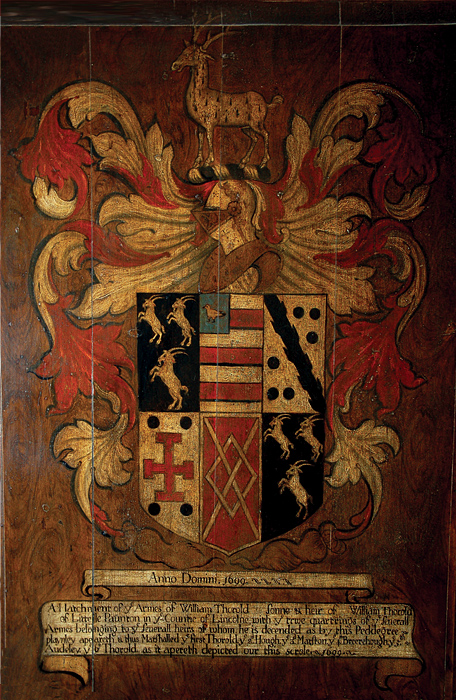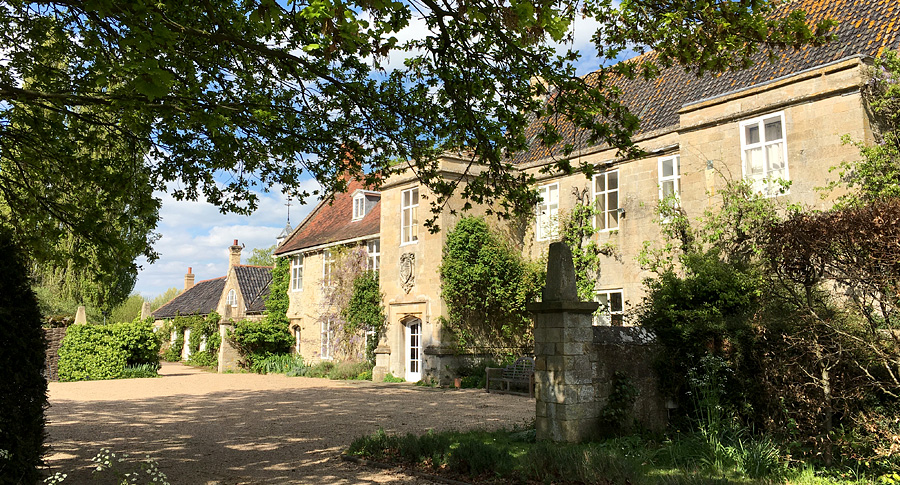
There has been a domestic building on this site since the 10th Century, making it one of the oldest in the country. We know a Saxon called Turvert lived here but was displaced by the de Marston family at the time of the Conquest as supporters of William the Bastard. The only physical evidence from that time is a Saxon cross which may be seen at the back of the house. In 1380 Richard Thorold of Selby, Yorkshire, married the heiress, Joan de Marston, and the property has been in the Thorold family until the present day.
The original house would have pretty modest but by the mid-14th Century the exterior would have looked much as it does now. Although from the front it has the appearance of two buildings joined together, this is deceptive. The Great Hall forms part of the usual pattern with secondary service buildings at one end. The main building would have been one open space from floor to attic with a central open fire with a walking gallery (we still have the old rail) to the southern end. A walking gallery was where the women walked in order to keep them away from disease. Only the Lord of the Manor and his wife would have had a first floor bedroom. The Manor or Hall house of this period would have been partly used as a fort and the whole village would have lived in it, sleeping on rushes on the ground floor.
By Tudor times the family was prospering and in 1577 the porch was added with two wings, making it the traditional E -shape, which was the fashion in Elizabethan times. Unfortunately, less than a century later there was a setback in their fortunes. The first serious engagement of the Civil War took place two miles away at Syston Park. On 23rd April 1642 Oliver Cromwell rode over here and set fire to the South Wing. We still find pistol and musket shot in the field. Some time later, to make the house symmetrical, the north wing was taken down and a house built of the stone a few hundred yards down the Barkston Road. William Thorold, a keen Royalist, who lived here at that time was created a Baronet for his part in the Civil War.

Gradually fortunes improved and in the mid-18th Century Sir John Thorold, 9th Baronet, built a splendid Palladian mansion at Syston Park. At about this time, the interior of the Hall was changed with a full first floor installed and the whole house divided into separate rooms in keeping with the times. It remained in the family with various different members living here over the years. In 1928 Sir George Thorold, 13th Baronet, decided Syston Park was far too large to maintain so it was pulled down. His cousin, Ernest Thorold, bought Marston Hall from him at this point and a certain amount of modernisation was carried out, including the installation of up to date plumbing and electricity. The Hall passed to the current owners, John and Liz Thorold in 2001 after the death of Ernest's son, Henry Thorold. Henry was a retired housemaster and well-known writer of many Shell Guides and other books on ancient houses. His considerable command of the language focused on the romantic aspect of the building but did not extend to the practicalities of the structure. There has therefore been an extended period of restoration and renovation over the past 18 years. Much has been achieved, not least to destroy its reputation (as quoted in Henry's obituary in The Times) of Marston Hall being 'the coldest house in England'! It is now warm and comfortable with central heating and large open fires.





